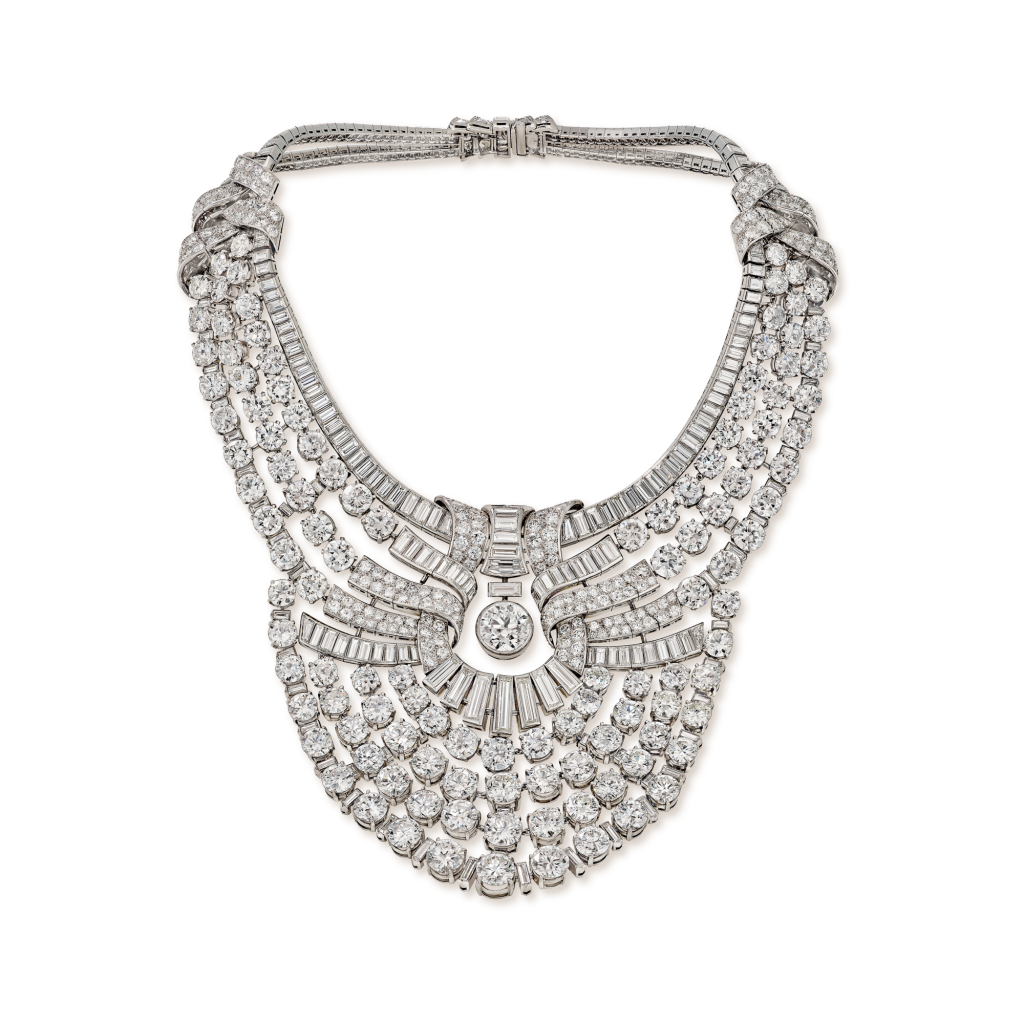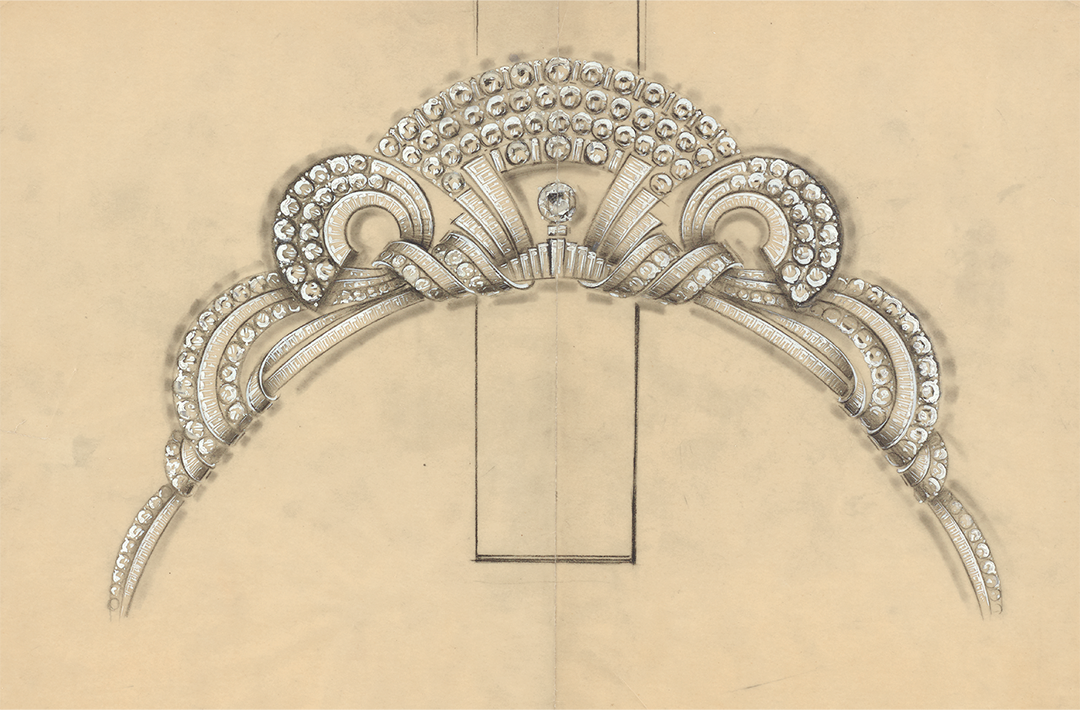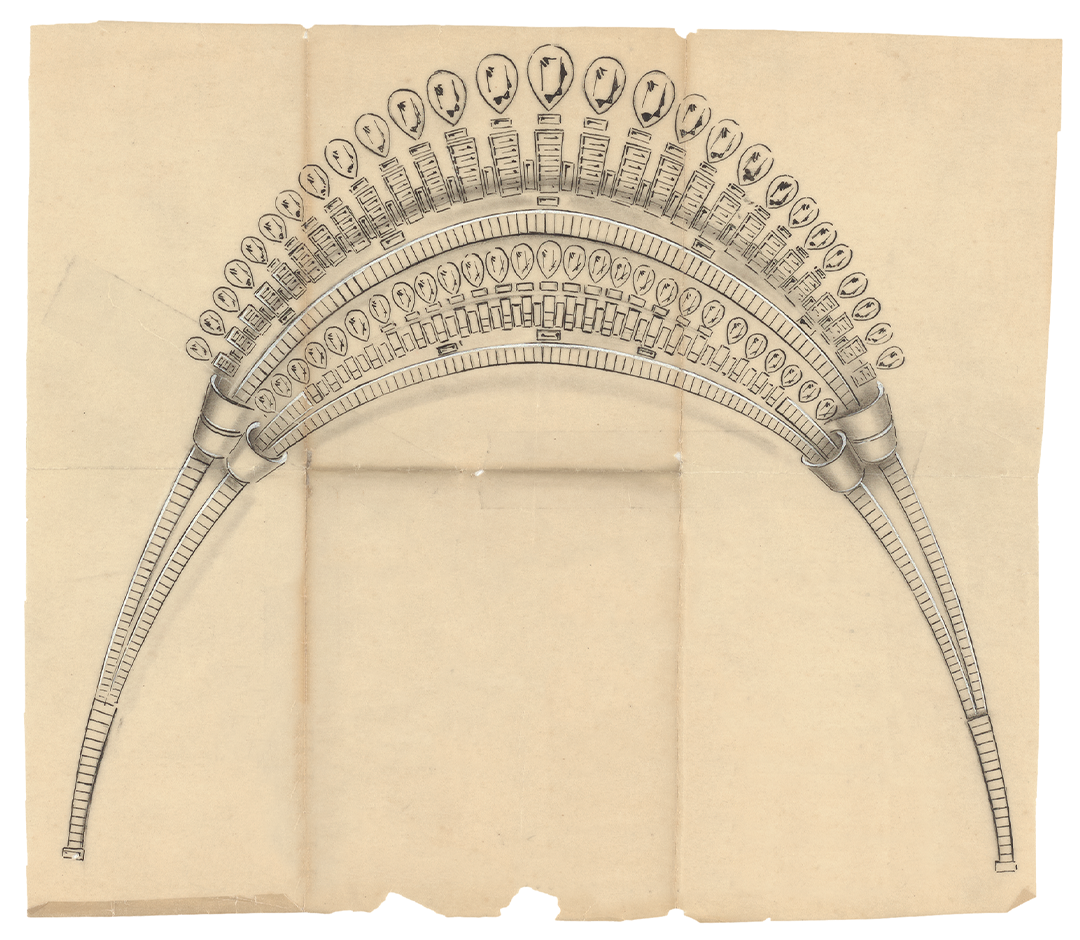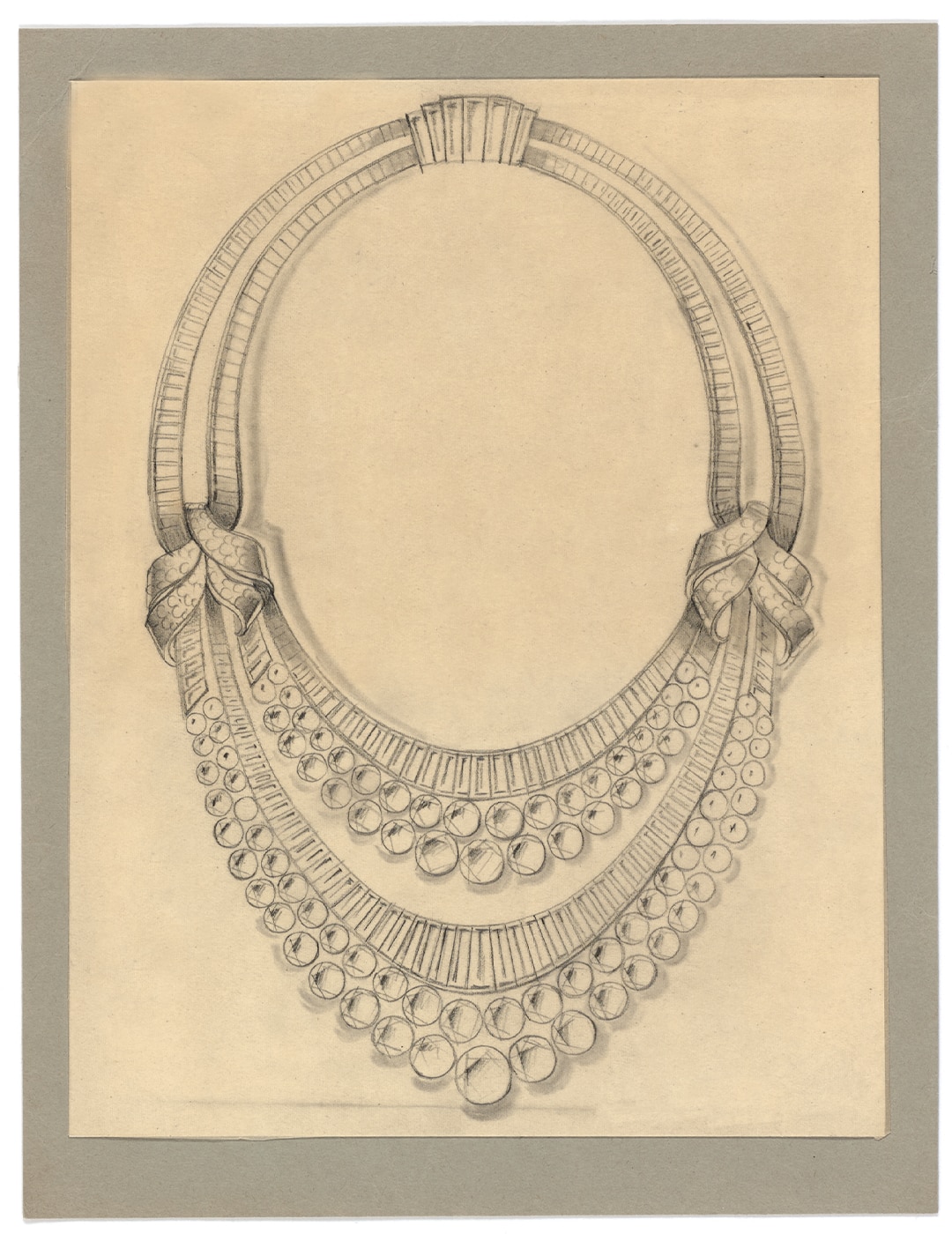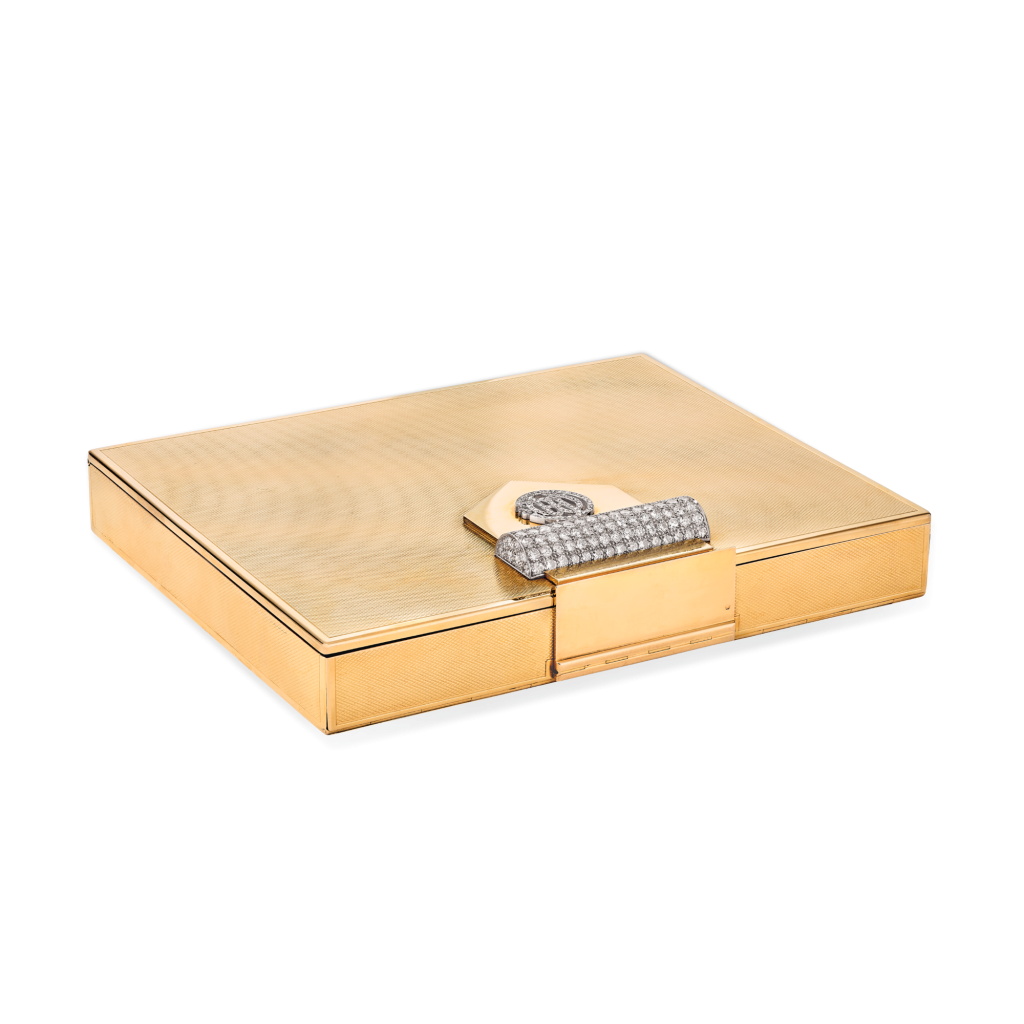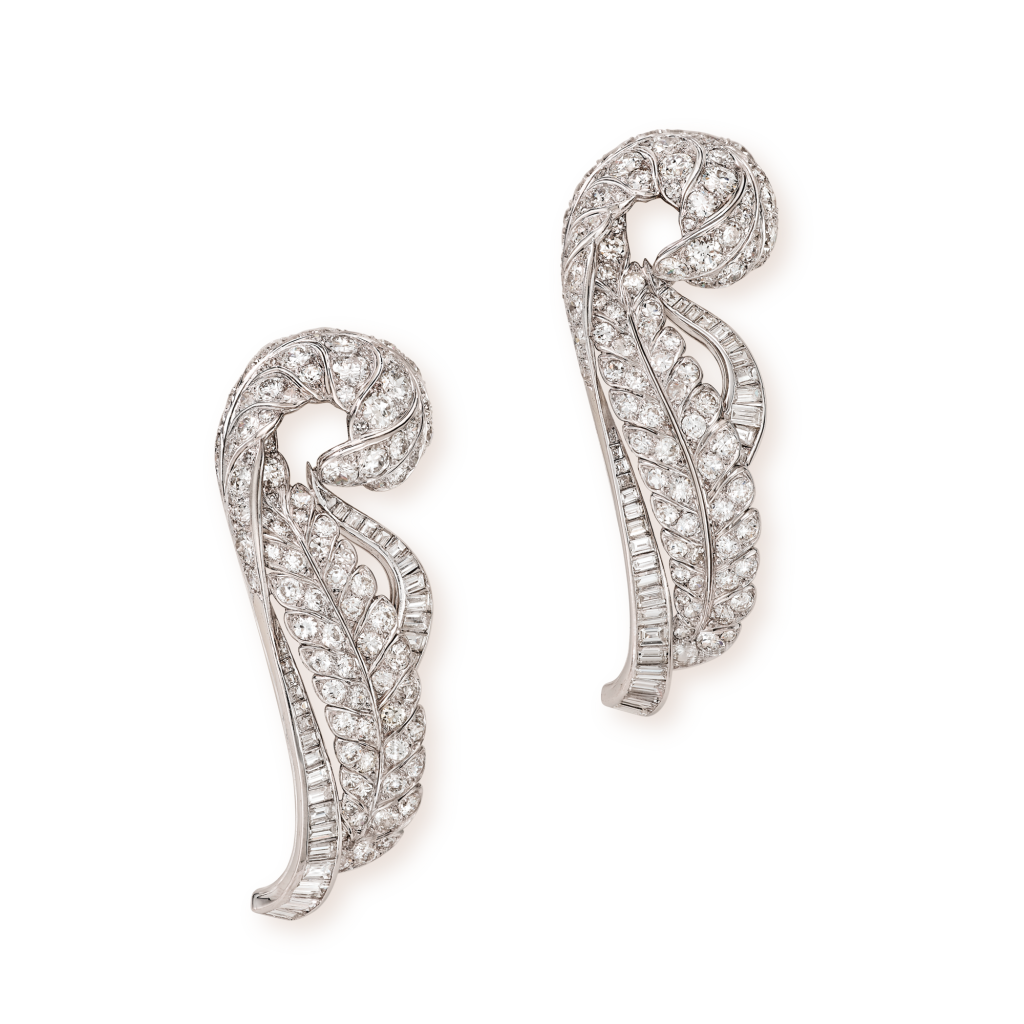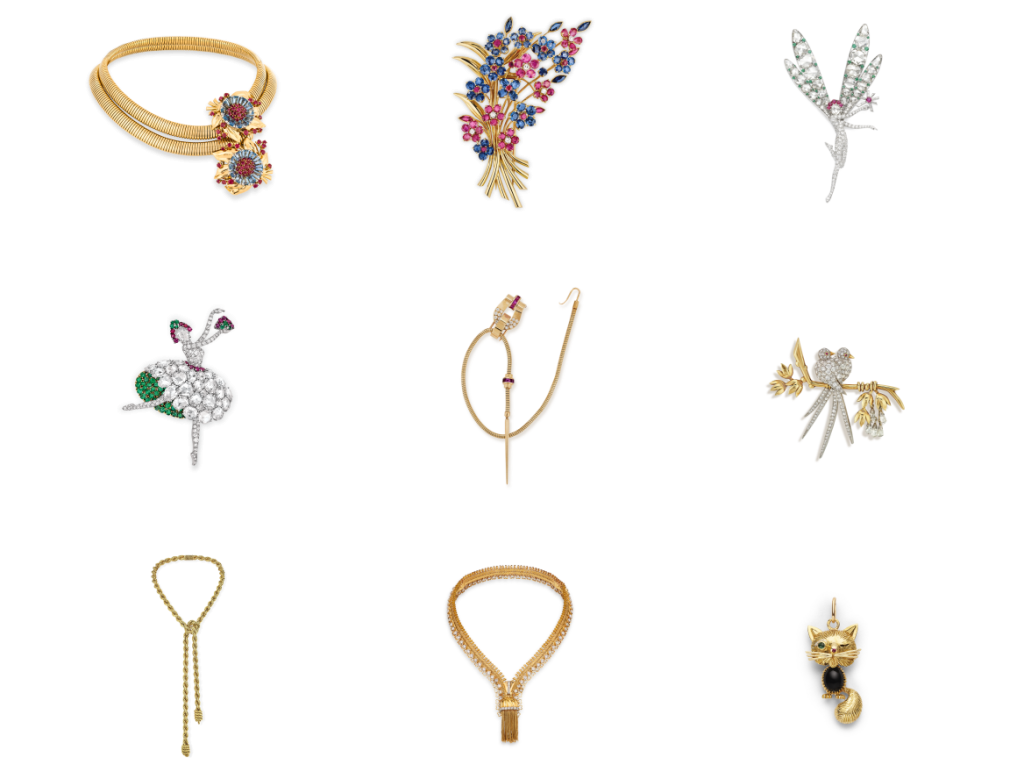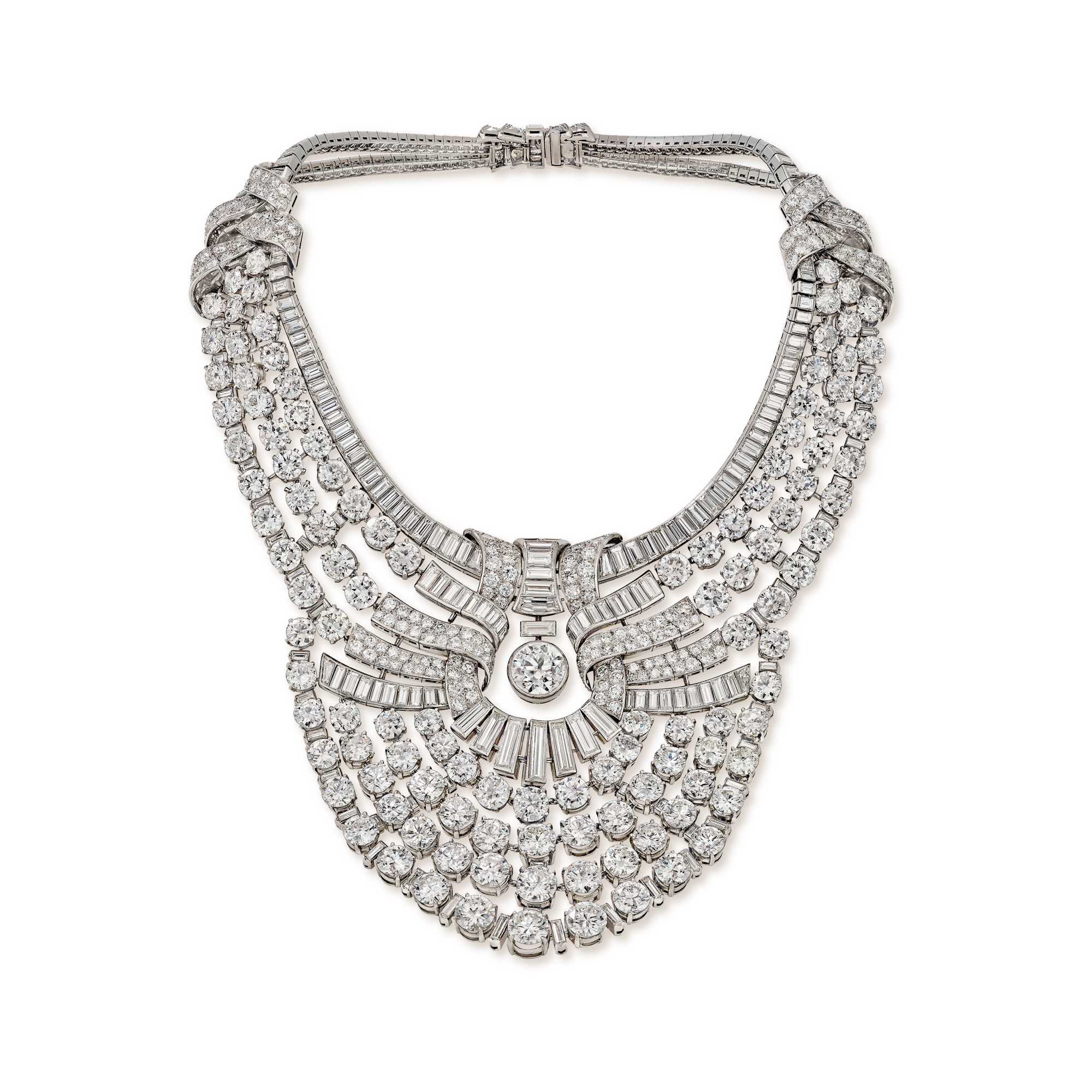
Collerette

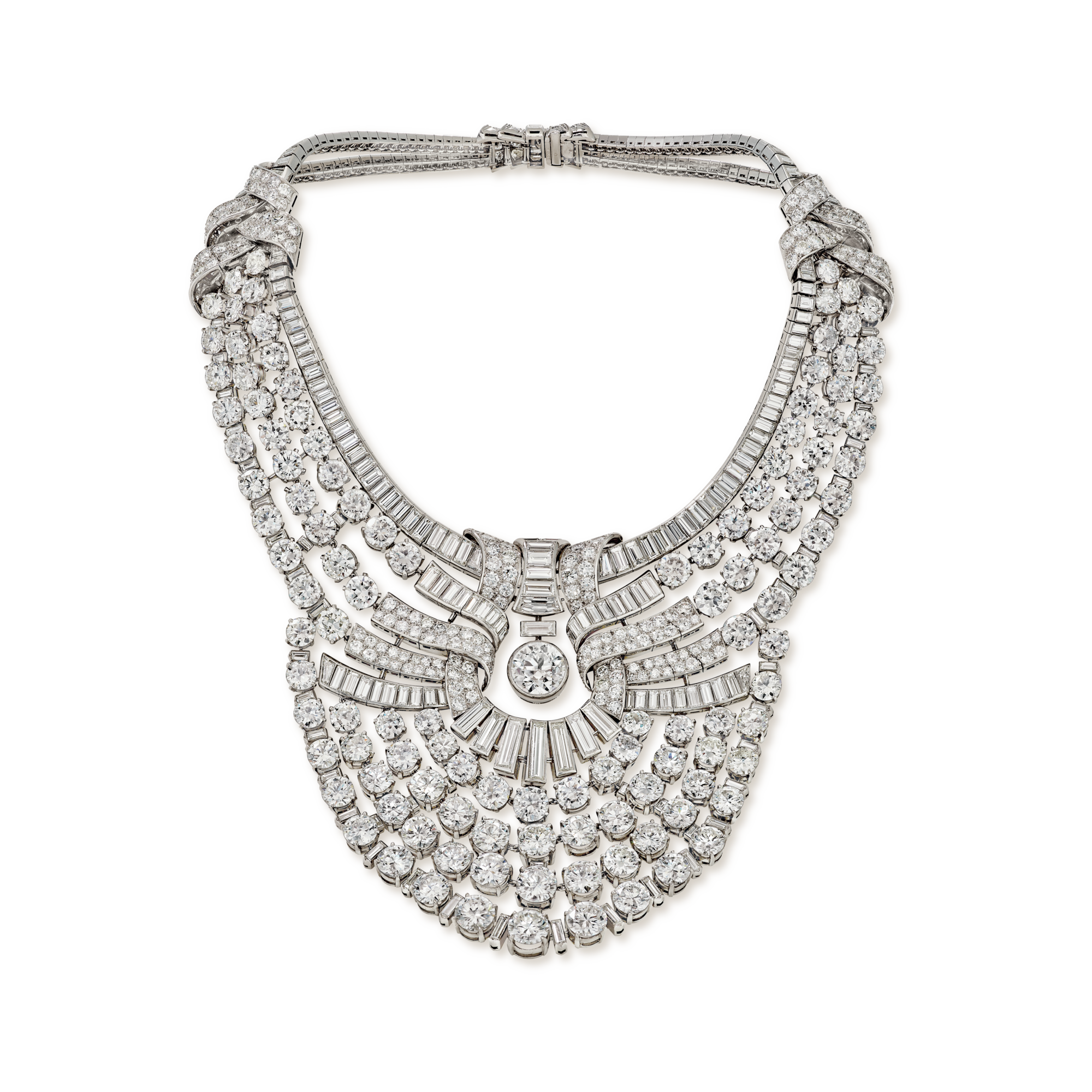
Creation details
- Creation year 1939
- Stone Diamond
- Material Platinum
- Usage Necklace
- Dimensions 419 mm
This monochrome necklace is an iconic example of the success of white diamond jewelry in the late 1930s, playing on the contrast between the different cuts of diamond and the positioning of the ornamentation.
The necklace is mounted on platinum and composed of three rows of brilliant-cut, claw-set diamonds, accentuated by an articulated row of baguette-cut diamonds. A semi-circular, draped motif occupies the center of the composition, formed of four rows of round diamonds framing ribbons alternately pave-set with brilliants and set with baguettes. These ribbons billow outwards, passing through a loop adorned with seven radiating baguette-cut diamonds. A closed-set round diamond is suspended majestically in the center of this loop.
An order of bridal jewelry
This piece is part of a jewelry project designed by Van Cleef & Arpels at the request of the Egyptian royal family for the marriage of Princess Fawzia of Egypt and the Crown Prince of Iran, Mohammad Reza Pahlavi, in 1939. The Maison was charged with the creation of the Princess’s wedding set, composed of a tiara, a matching necklace, and a pair of pampilles earrings each bearing a suspended pear-cut diamond. The necklace displayed here belonged to the jewelry set worn by Queen Nazli of Egypt for the event. It was completed by a tiara using the same semi-circular ornamentation with platinum and diamond ribbons woven around them.
A showcase for aesthetic and technical developments
These two sets of jewelry stand testament to the Maison’s prestigious royal commissions, and form a coherent ensemble displaying the technical evolutions of white diamond jewelry at that time. “Many months were required to collect” the numerous diamonds making up these pieces of jewelry, “all blue-white, uncut and of extraordinary regularity, to harmonious effect.”1Anonymous, “Parure de princesse. The qualifying term “blue-white” used here for diamonds aims to underline the exceptional brightness and purity of the gems. These various pieces, including necklaces and tiaras, adopt the esthetic notions of the period, structured by drapery effects and convolutions set with gems.
Collerette
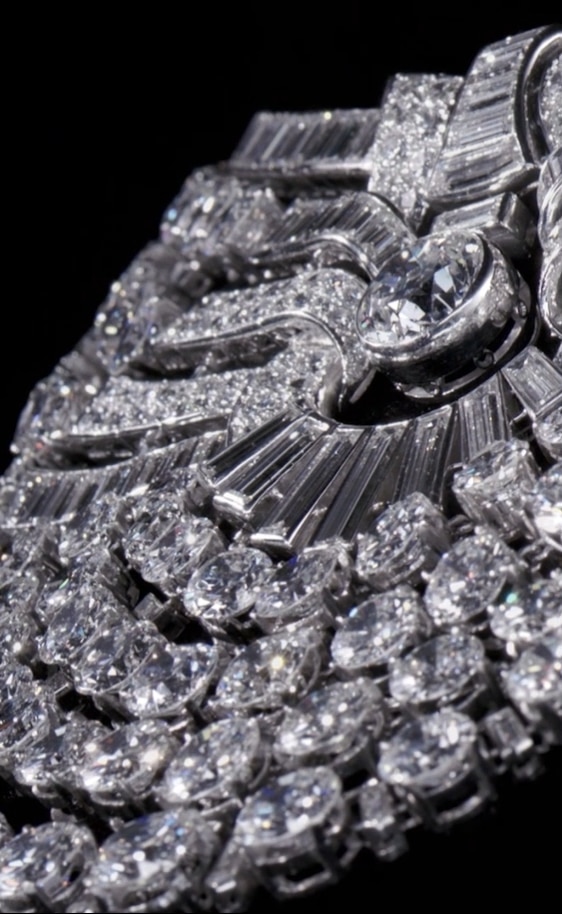
To go deeper
